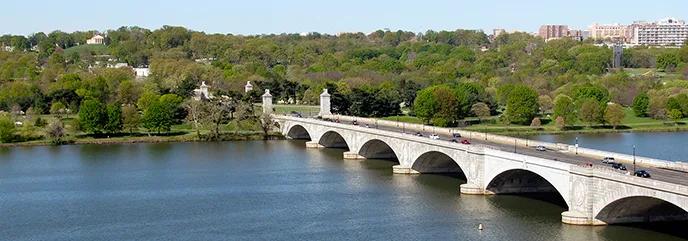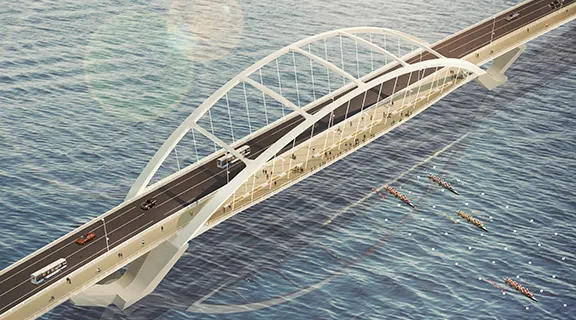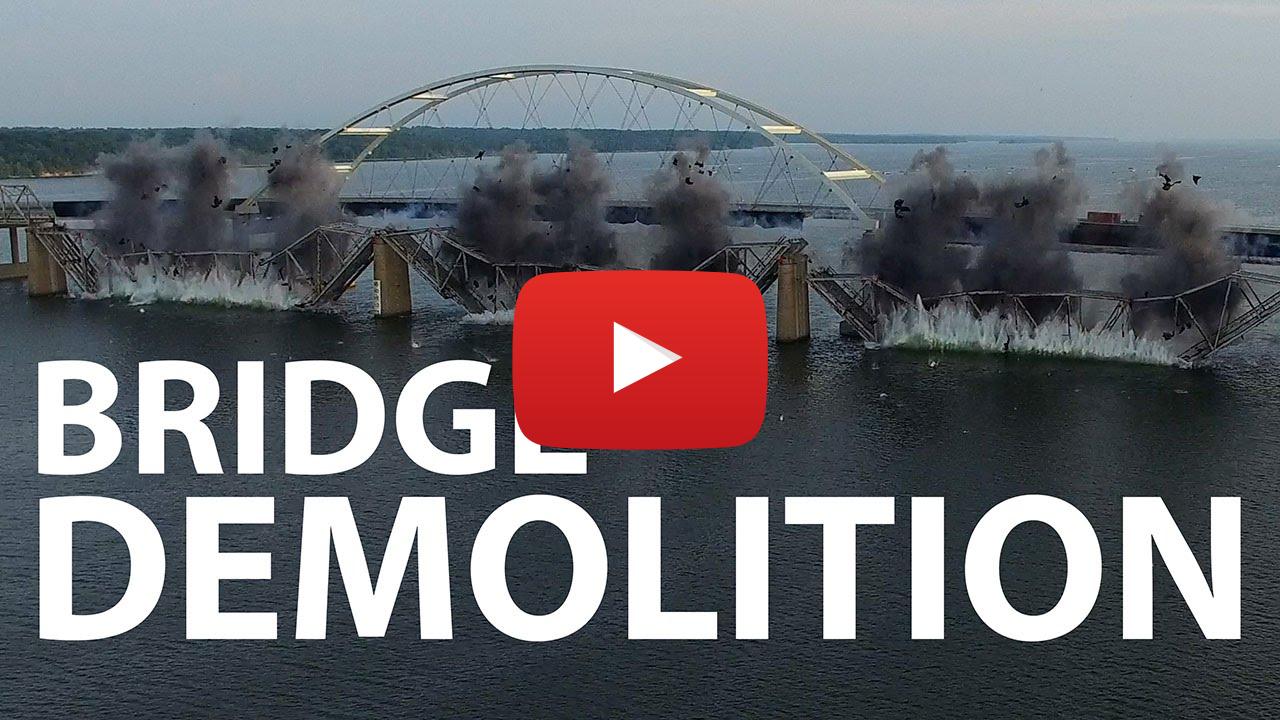The 1930’s Arlington Memorial Bridge in Washington, which has carried US presidents and military heroes across the Potomac River to the famous Arlington Cemetery, is to undergo refurbishment, again.
Cianbro Corporation, based in the state of Maine and which worked on the bridge in 2013, picked up the contract for US$2,523,520, according to a notice on the FedBizOpps.gov website.
The Federal Business Opportunities website had earlier this year asked for submissions for the work: “The project will be sp
July 15, 2015
Read time: 3 mins

The 1930’s Arlington Memorial Bridge in Washington, which has carried US presidents and military heroes across the Potomac River to the famous Arlington Cemetery, is to undergo refurbishment, again.
Cianbro Corporation, based in the state of Maine and which worked on the bridge in 2013, picked up the contract for US$2,523,520, according to a notice on the FedBizOpps.gov website.
The Federal Business Opportunities website had earlier this year asked for submissions for the work: “The project will be split into multiple work schedules/contract options, with the cost of the entire project expected to fall within the price range of $2,000,000 to $5,000,000.”
Earlier this year, the bridge’s owner, the National Park Service, closed two lanes and imposed a weight limit on vehicles pending emergency repairs.
The service says on its website that the bridge was first proposed in 1886 but wasn’t built until 1932. “Today, Memorial Bridge symbolically links North and South in its alignment between the Lincoln Memorial and Arlington House, the Robert E. Lee Memorial.”
In April, the Washington, D.C.-based American Road and Transportation Builders Association (ARTBA) identified the Memorial Bridge as one of more than 61,000 “structurally deficient bridges” in the country but also one of the most significant because of its location.
ARTBA said on its website this month that the latest work will include repair and replacement of structural concrete, steel and timber members. Also included will be installation of additional elastomeric bearing pads, expansion joint repair or replacement, debris removal from bascule span truss members, trunnion posts and the bottom of the trunnion areas. There will be concrete sidewalk repairs, drainage improvements and an ultra-thin bonded asphalt overlay.
Work is expected to continue into next year on the bridge which carries around 55,000 people daily.
A recent report by the Washington Post newspaper reported that the 10ton load limit across the entire length of the bridge “essentially eliminates most bus traffic on the granite-faced, arching landmark”.
The bridge’s condition was embarrassing, the Post noted. “Although tens of thousands of U.S. bridges have been deemed structurally deficient, the functional mess and potent symbolism of a crumbling Memorial Bridge needing emergency repairs had the Washington region’s congressional representatives fuming.”
The Cianbro appointment is the first step in a possible $250 million multiyear repair project that could close the bridge for up to three months, the Post reported.
The structure is a masonry, steel and stone arch bridge with a central bascule. But, as the Post pointed out in April, “the main lever in the Memorial Bridge control room hasn’t opened the draw span in more than 50 years”.
ARTBA, which this year analysed the US Department of Transport’s National Bridge Inventory database, said more than more than 61,000 structurally deficient bridges remain in need of significant repair.
While structurally deficient bridges may not be imminently unsafe, ARTBA said that signs should be posted so the public understands they have structural deficiencies that need repair.
Cianbro Corporation, based in the state of Maine and which worked on the bridge in 2013, picked up the contract for US$2,523,520, according to a notice on the FedBizOpps.gov website.
The Federal Business Opportunities website had earlier this year asked for submissions for the work: “The project will be split into multiple work schedules/contract options, with the cost of the entire project expected to fall within the price range of $2,000,000 to $5,000,000.”
Earlier this year, the bridge’s owner, the National Park Service, closed two lanes and imposed a weight limit on vehicles pending emergency repairs.
The service says on its website that the bridge was first proposed in 1886 but wasn’t built until 1932. “Today, Memorial Bridge symbolically links North and South in its alignment between the Lincoln Memorial and Arlington House, the Robert E. Lee Memorial.”
In April, the Washington, D.C.-based American Road and Transportation Builders Association (ARTBA) identified the Memorial Bridge as one of more than 61,000 “structurally deficient bridges” in the country but also one of the most significant because of its location.
ARTBA said on its website this month that the latest work will include repair and replacement of structural concrete, steel and timber members. Also included will be installation of additional elastomeric bearing pads, expansion joint repair or replacement, debris removal from bascule span truss members, trunnion posts and the bottom of the trunnion areas. There will be concrete sidewalk repairs, drainage improvements and an ultra-thin bonded asphalt overlay.
Work is expected to continue into next year on the bridge which carries around 55,000 people daily.
A recent report by the Washington Post newspaper reported that the 10ton load limit across the entire length of the bridge “essentially eliminates most bus traffic on the granite-faced, arching landmark”.
The bridge’s condition was embarrassing, the Post noted. “Although tens of thousands of U.S. bridges have been deemed structurally deficient, the functional mess and potent symbolism of a crumbling Memorial Bridge needing emergency repairs had the Washington region’s congressional representatives fuming.”
The Cianbro appointment is the first step in a possible $250 million multiyear repair project that could close the bridge for up to three months, the Post reported.
The structure is a masonry, steel and stone arch bridge with a central bascule. But, as the Post pointed out in April, “the main lever in the Memorial Bridge control room hasn’t opened the draw span in more than 50 years”.
ARTBA, which this year analysed the US Department of Transport’s National Bridge Inventory database, said more than more than 61,000 structurally deficient bridges remain in need of significant repair.
While structurally deficient bridges may not be imminently unsafe, ARTBA said that signs should be posted so the public understands they have structural deficiencies that need repair.









